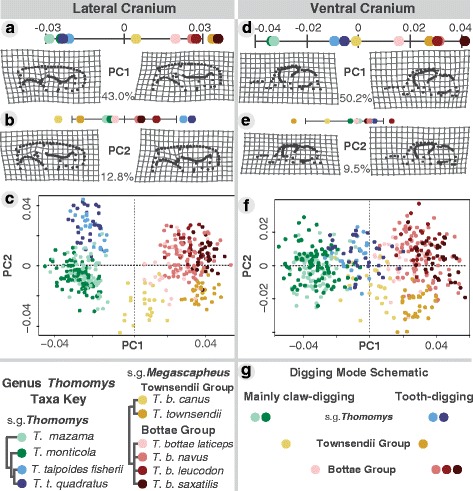Fig. 3.

Cranial shape principal component analysis. For all cranial PCs, positive scores correspond with better tooth-digging shapes a–g. Lateral cranial principal component (PC) 1 captures incisor procumbency due to allometry, points for each taxa give their average value along the PC axis a while PC2 appears to capture incisor procumbency related to a shift in incisor root position b. Lateral cranial PCA morphospace for each individual in the dataset c. Ventral cranium view PC1 captures skull robustness d while PC2 differentiates subgenus Megascapheus based on muscle attachment sites on the zygomatic arch as well as the orientation of the foramen magnum e. Ventral cranial PCA morphospace f. Digging mode schematic presents the relative use of tooth- and claw-digging used by taxa in our study region based on the literature and inferences from our shape analyses g
